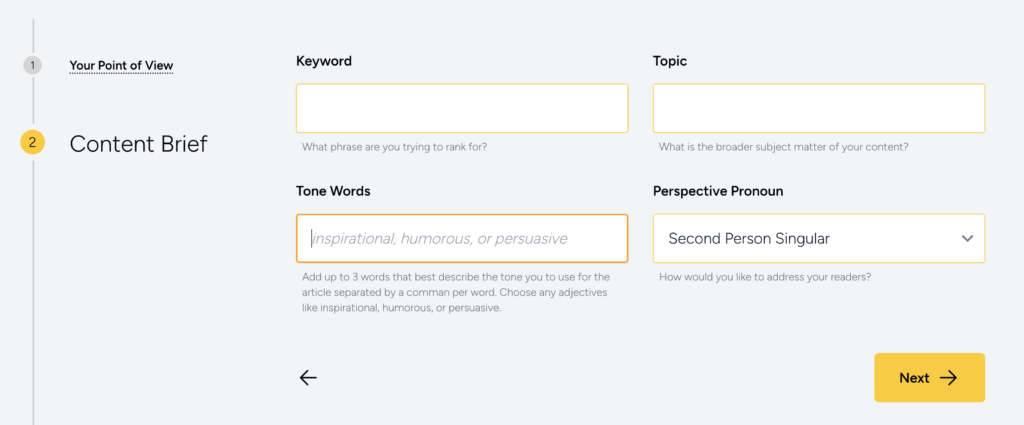Content Consistency: Maintaining Unified Messaging Across Platforms
In a digital world, brands must represent themselves across multiple marketing channels. From blogs to social media and email, the average consumer interacts with your brand in various ways. Content consistency is vital for maintaining a solid brand identity.
The more marketing platforms your business utilizes, the more challenging consistency becomes. A cohesive marketing strategy is essential. This article explores the steps to maintaining brand uniformity, no matter where or how you market your business. Let’s get started.
Jump to…
- Define Your Brand Identity and Ethos
- Create Brand Guidelines
- Offer Clarity to All Teams
- Use Quillbee
- Repurpose Existing Content
- Audit and Update
- Don’t Be Afraid to Evolve
How to Maintain Consistency in Messaging
Consistency is crucial for brand recognition and building trust with your target audience. It ensures your brand is memorable and reliable across all platforms. Here are some critical steps to help you maintain consistency in your messaging:
Define Your Brand Identity and Ethos
Creating a strong brand identity is the first step in maintaining consistency. It requires delving into what your company truly stands for.
Take Dove, for example. This personal care brand champions self-love and acceptance. Their messaging is about “dismantling toxic beauty standards and creating a truly inclusive vision of beauty.” There’s also IKEA, a furniture company that unites affordability and comfort. Their products “create a better everyday life for the people.”
Are you a playful, fun brand that aims to bring joy to consumers? A premium brand that delivers high-quality products or services? Or, perhaps, a brand dedicated to sustainability and bettering the world for all?
In essence, consider the emotional impact you want to have on consumers. Defining this is crucial; it serves as a guiding force for your messaging. By specifying your brand personality, you can ensure that your messaging aligns with your core values and communicates the right feelings to your customers.
Create Brand Guidelines
Once you’ve nailed down your identity, it’s time to create brand guidelines. Think of this document as a roadmap for your marketing team — and the entire company — to maintain consistency. They should be comprehensive, including:
- Color palette
- Logos and iconography
- Typography
- Images and illustrations
- Tone of voice
- Copy/grammatical style
A brand guide helps everyone in your organization understand how to communicate your brand’s personality. They provide clear instructions on all marketing channels’ visual and verbal elements.
When creating your brand guidelines, consider the unique needs of different platforms. Each has its own characteristics and audience, so it’s important to adapt your brand personality to fit the specific requirements of each channel.
For example, social media may be punchy and clever, while blogs might be more comprehensive and persuasive. Address how your guidelines apply to these scenarios (with examples!) so your brand personality shines cohesively.
Offer Clarity to All Teams

Communication is key for content consistency. While your marketing team is an obvious stakeholder, you should also involve other departments in the conversation — like sales, customer service, and HR.
These teams play a significant role in championing your overall brand identity. Regular meetings, training sessions, and internal communications can ensure that everyone understands the brand’s personality and guidelines. Sharing examples of on-brand content and discussing real-life scenarios can help team members grasp the nuances.
By effectively communicating your brand personality and guidelines to team members, you empower them to represent the brand with every interaction. This includes providing them with a clear understanding of the brand’s values, tone of voice, visual elements, and messaging style.
When everyone is on the same page, they can create a cohesive experience for everyone who interacts with your brand, from customers to potential employees.
Use Quillbee for Content Consistency
Content is an area where your brand identity can truly shine — if you remain consistent across all messaging platforms.
Imagine your favorite restaurant chain. Picture the colors, vibe, and level of customer service. Now, say you visit the same chain in a different location. What if the entire restaurant looked and felt completely different? What if the servers had a different attitude? You’d probably be confused and disappointed. That’s how your customers feel when your brand messaging isn’t consistent across email, blogs, social media, and website copy.
It’s crucial to maintain content consistency in your messaging. One tool that can help immensely is Quillbee. Most marketing teams have multiple writers with their own unique style, but Quillbee’s Tone Words feature allows your team to maintain a cohesive voice — no matter how many writers contribute to the content.

Add up to three adjectives describing your brand tone — from inspirational, empowering, and positive to bold, persuasive, and confident. Quillbee provides a unified voice for your brand, ensuring your messaging remains consistent across your staff writers and freelancers.
Repurpose Existing Content
Writing consistent messaging is time-consuming — especially if you start from scratch. However, there’s a way to save time and effort: repurposing existing material.
One way to repurpose messaging is by adapting published content for a different marketing channel. For example, crafting a narrative blog post based on a YouTube video or repackaging a compelling article series into an eBook.
You can also freshen up older content and repost it on the same platform. Say you’re a SaaS company that continually adds new features to your service. There’s no need to write wholly new blogs: take those pre-existing posts and incorporate your latest features with fresh titles and subheadings.
This strategy simplifies maintaining consistency, as you’re building upon content that already aligns with your brand identity. It’s also a fantastic way to reinforce your message and product benefits across all channels.
You don’t have to reinvent the wheel. Instead, make the most of the resources you already have.
Audit and Update for Content Consistency
Consistency is easy to start but hard to maintain. Over time, different marketing channels can take on a life of their own. And if you’re posting lots of content at a fast pace, brand consistency can slip through the cracks. To keep that vital cohesion, continuously audit and update content as needed.
Carefully assess your brand’s presence on different platforms, including your website, social media profiles, email marketing campaigns, and any other channels where your brand posts. You may even want to create a dedicated auditing team so this task isn’t forgotten.
Look for inconsistencies in tone, style, visuals, and overall brand representation. Identify content that may have deviated from your established guidelines. If you find any areas that need improvement, update them accordingly. This may involve rewriting copy, redesigning visuals, or rebranding certain elements.
Regular audits keep the whole team on track and help ensure consistency in your marketing endeavors.
Don’t Be Afraid to Evolve
Consistency is vital, but that doesn’t mean things will always stay the same. Think about where you started and how far you’ve come. Healthy businesses grow and adapt. Consistency doesn’t equal stagnation, so don’t be afraid to evolve your brand identity.
As time passes, make sure that your messaging continues to reflect the emotional experiences you want to invoke. Update your brand guidelines and existing content as needed. The key is to remain authentic. If you’ve grown from a small 10-person startup to a medium-sized or large organization, your original identity may no longer ring true. And that’s okay.
Consistent marketing means reflecting who you are right now, not who you were a decade ago.
Content Consistency With Confidence

Content consistency across your marketing channels takes time and strategy, but it’s well worth it. When your messaging aligns, your brand identity becomes more recognizable and trustworthy to consumers.
It’s a dynamic process that requires ongoing effort. A clear brand identity is the foundation, and crafting brand guidelines provides a roadmap for your team — as does clarity. Tools like Quillbee are instrumental in preserving a unified voice, especially in a content-rich environment with multiple contributors, while repurposing existing content is a fantastic time-saving strategy.
However, the journey doesn’t end with the initial setup. Continuous auditing and updates are proactive approaches that maintain consistency. And when you feel like your original identity has changed, make sure your content evolves alongside it.
Interested in hearing more about how Quillbee can take your content creation and consistency further? Try Quillbee for free today to see firsthand how this AI assistant can enhance your marketing efforts.







